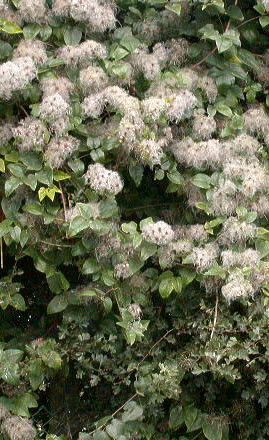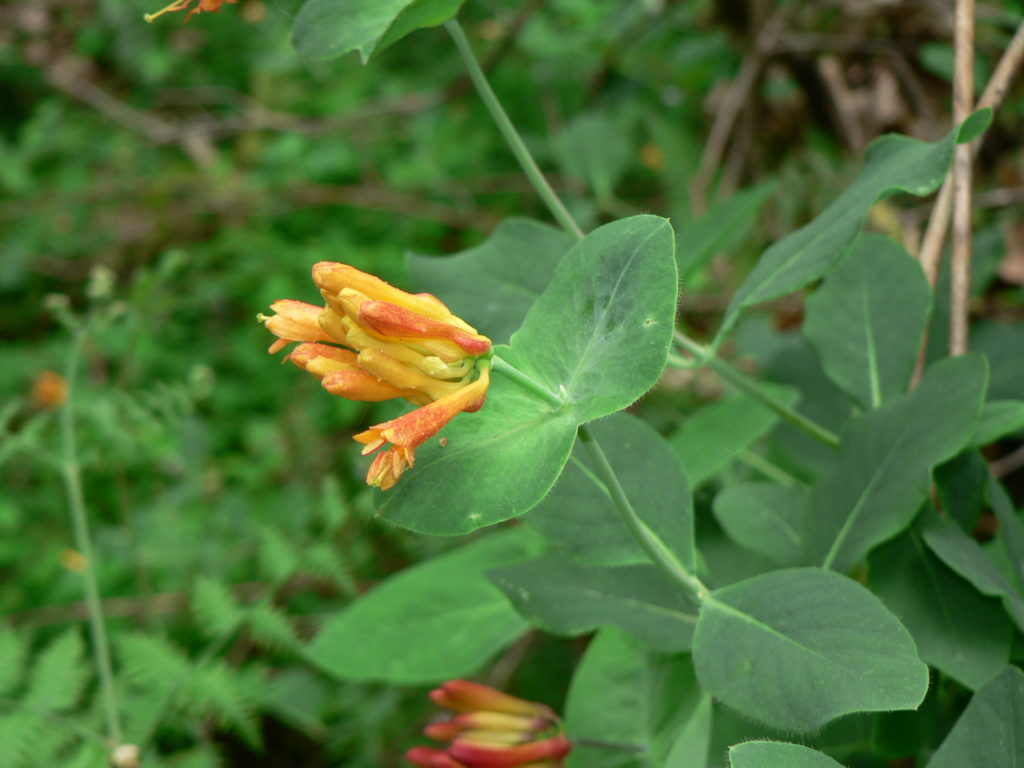Weed of the Month: Clematis (Clematis vitalba)
Characteristics
Clematis —also called traveler’s joy or old man’s beard—is a deciduous climbing vine, with stringy bark that easily rubs off on older stems. Leaves are compound, made up of 5 leaflets (young plants may have only 3 leaflets), and fall off by early January. Clematis blooms from July to September, with fluffy grey seed-heads ripening from September to January and persisting. Native to Eurasia, clematis was introduced as an ornamental (possibly as rootstock for showier varieties) in Oregon between 1950 and 1970, and—though fun to swing from, a la Tarzan—now competes with English ivy to be the largest invasive species threat to trees. Note: that lovely garden clematis in your yard is perfectly well-behaved—the clematis in question has much less interesting flowers. Also note: Oregon actually has a native clematis (C. ligusticifolia), which is easily confused with C. vitalba. It’s primarily found east of the Cascades and only occurs in a few places locally.
Spread
Clematis reproduces first and foremost by seed; each plant can produce over 100,000 seeds, which are dispersed by wind, water, people and other animals. Clematis can grow five to seven times faster than ivy, with each stem capable of producing 30 feet of growth in one season. It can also spread by fragmentation, when roots are produced from stem fragments (typically from older stems, which can hold more water). Clematis quickly blankets shrubs and trees, eventually causing them to collapse, and also grows along the ground in layers that can be several feet thick, preventing growth of native vegetation. It will readily establish itself in any area that is not managed, and tolerates a variety of conditions.
Control
All vines running along the ground and just under the surface must be dug out; roots should be broken off or cut at least 2” below the surface. Eradication requires multiple visits. Planting conifers will help limit germination by reducing available sunlight; dense, native ground cover may also significantly reduce seed germination. Good canopy cover also limits distance of seed dispersal.
Native replacement
If you’re looking for a climber on a fence or elsewhere that isn’t a nightmare, we have not one, but two native climbing honeysuckles that can be used in place of clematis: orange honeysuckle (Lonicera ciliosa) will tolerate shady conditions, while hairy honeysuckle (L. hispidula) grows in full sun. Both get lovely tubular flowers beloved by hummingbirds; neither is intent on world domination.


